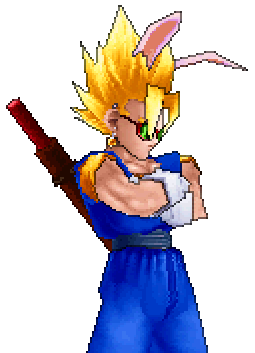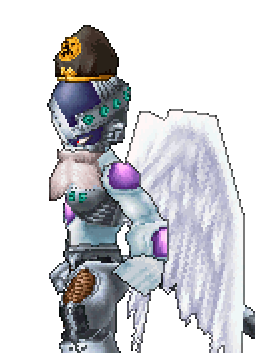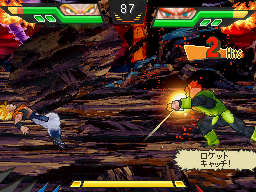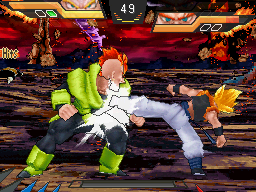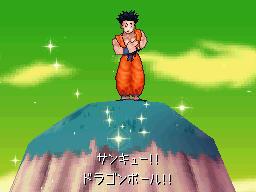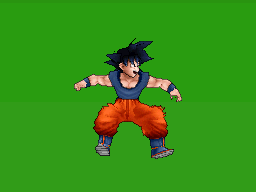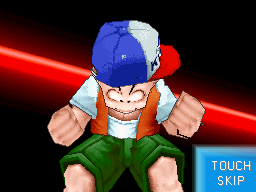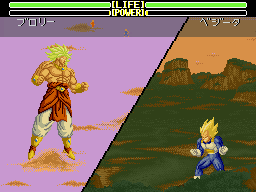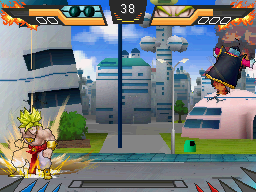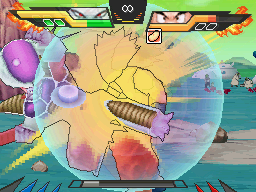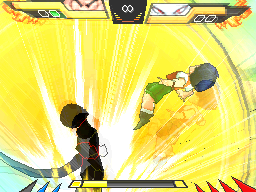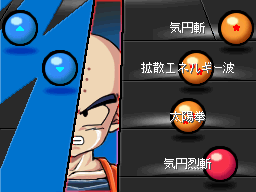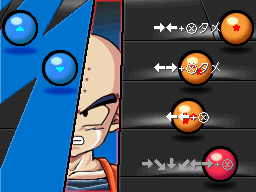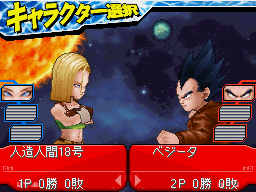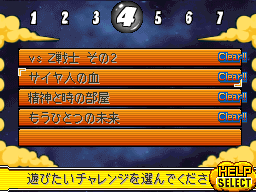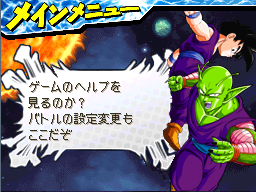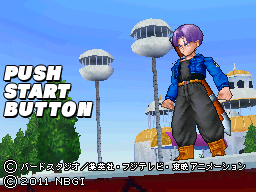The Nintendo DS saw its fair share of releases for the Dragon Ball series since right up near the system’s launch with Bukū Ressen / Supersonic Warriors 2 back in 2005. From fighting games to card-based games (Harukanaru Gokū Densetsu) to traditional RPGs (Saiya-jin Raishū / Attack of the Saiyans) to action adventure games (Dragon Ball DS / Origins), there really was something for everyone.
Heading into the Nintendo 3DS launch window, few fans expected more action on the original Nintendo DS. In early November 2010, Siliconeria discovered two new video game title trademarks from Namco-Bandai, both of which seemed to point to Dragon Ball games on the horizon. “Ultimate Butōden”, one of the two names, was formally announced as Dragon Ball Kai: Ultimate Butōden in the pages of Jump the very next week. It would be only the second game to receive the “Kai” branding (both, interestingly, on the Nintendo DS), and would be a new fighting game, but with a few twists. The name itself was a tossback to the Super Butōden series of games on the Super Famicom (and extending onto the Sega Saturn by way of Shin Butōden), the characters sported quasi-SD designs, and the developer would eventually be revealed as Game Republic, who had previously done the Dragon Ball DS / Origins games over the last several years.
While the game went on to sell 31,108 copies its first week in Japan (half the amount of the first Dragon Ball DS, but up from the second Dragon Ball DS), beyond the super-enthusiast crowd with a penchant for diving into import games, it quickly flew back under the radar.
Was this the fighting game everyone had been waiting for, finally switching things up from the two main console game engines, and was it an appropriate swan song for the franchise on the original Nintendo DS which had treated it so well?
Quick Details:
| ASIN: | B004G8PBMY |
| Developer: | Game Republic |
| Publisher: | Namco-Bandai |
| Release Date: | 03 February 2011 |
| MSRP: | ¥5,980 |
| Platforms: | Nintendo DS (Japan-only) |
|
|
|
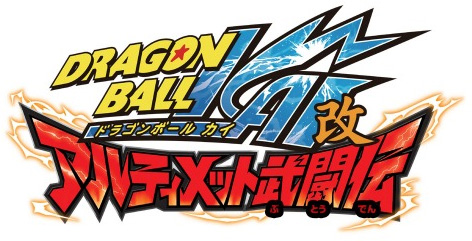
Review of this game was made possible through your CDJapan referral purchases. If you are interested in contributing to the site, please visit our “Donate” page or contact us directly.
Review By: Mike LaBrie (VegettoEX)
So how about that there video game…?
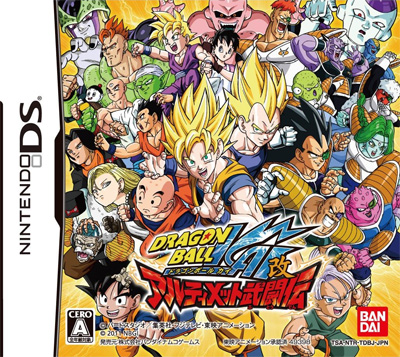
How We Gamed
Being a Japanese-original game, all voices were pre-set to go with our preferred cast. This of course meant that the entire rest of the game is also presented in the Japanese language, as well. Menus are typical katakana fare, so those versed enough in basic moon speak will have no difficulty shuffling around.
Despite coming just a few short months after Raging Blast 2, the shift to a handheld platform and a completely new engine helped the game feel fresh. The “Kai” branding, like with Attack of the Saiyans, meant very little — the story extends into the Majin Boo story arc (whereas the TV series concluded “early” after the end of the Cell arc), and contains a wealth of “What If?” scenarios that splinter off from author Akira Toriyama’s original story, and has the obligatory Broli inclusion.
Approximately five hours were put into the game’s story mode, which included completing all sub-story “What If?” scenarios. Plenty of additional hours were sunk into going back for “S”-ranks — both in the standard story mode and challenge mode fights — and customizing characters.
Presentation
Developer Game Republic was able to pull a fair amount of charm out of the Nintendo DS via the presentation in the two Dragon Ball DS / Origins games, which carries over to Ultimate Butōden, albeit in a different way. Like in all the screens shown prior to the game’s release, the game’s visual flair approaches “SD” (“super deformed”) without fully getting there. Characters are short and colorful, but still moderately proportional.
The amount of customization you can do with your characters is mind-boggling and possibly jaw-dropping depending on your fandom level. What would normally end up being paid downloadable content is indeed represented as it would have been “back in the day” — unlockable right within the game. Get enough good rankings, pay the points, and you too can dress Vegetto up in bunny ears, sunglasses, and toss Nyoi-bō on his back. Or just give Freeza a funny beard and angel wings. Whatever floats your boat.
The game itself moves at a fairly blistering pace. Characters dash toward and away from each other like no other game you have played, jumps have a nice weight to them, and things go flying by in the background — it is actually one of the most impressive visual experiences on the ol’ Nintendo DS in many ways. Special attacks can be surprisingly cinematic on the downsized screens. #16’s piledriver in particular does a little bit of bullet-time awesomeness, while Gogeta’s kicks bounce the opponent every which way. The camera tends to feel a little shaky at times (particularly during super moves), but it all feels at home in the Dragon Ball universe.
The destroyed-Namek stage in particular really shows off the game’s chops. Chunks of the ground are flying up into the air both in front of and behind your characters and lava rains down from above. As you dash around, speed lines appear behind your character. The lifebars are on fire. The camera zooms in as you close in on your opponent, tilting clockwise a little bit as you fly closer. All the while, there is not a hint of slowdown or performance hiccups.
The only real nods to Dragon Ball Kai within the game are from its music, and even then only the tiniest bit. The main title screen music is an instrumental of “Dragon Soul” (the opening theme to the “refreshed” version of the series), and the super move music feels as if it channels “Dragon Soul” as well… but that is it. The rest is standard, upbeat, rockin’ tunes that you would expect of a modern Dragon Ball. Nothing else is truly memorable, but it also will not grate on you as some of the other (particularly international replacement) tunes have done lately via other games.
Speaking of characters, the selection is an interesting one. It is a modern Dragon Ball game, which means an enormous cast: 51 to be exact. The roster spans the usual suspects from Goku to Piccolo to Vegeta, tosses in a few movie and TV special regulars from Gogeta to Broli to Bardock, and wraps things up with a never-before-playable individual of awesomeness: our good ol’ North Kaiō-sama himself. With special moves like running a car into the opponent and a super move that is a tossback to throwing bricks at Goku, there is clearly a lot of love and humor thrown into the mix with not just Kaiō, but the entire roster.
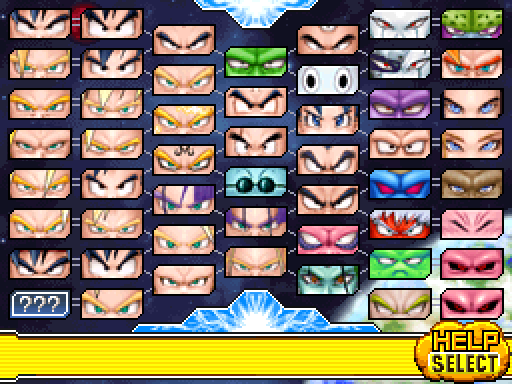
Story wise, Ultimate Butōden runs from the beginning of the “Z” story with Raditz up through the end of the Majin Boo story arc. Additional stories pulled from the source material are also included, such as Bardock’s assault on Freeza, the Broli movies, and more. “What If?” material tends to focus on specific characters and bizarre scenarios for them. One of the earliest puts Yamcha against some of the major foes… with him dying at the end of each fight no matter what (sorry, spoilers!). Many have hysterical cutscenes that play out almost exactly the same as in the original anime, but with — for example — a sparkly Yamcha showing up on a different cliff right as Freeza loses his temper against Kuririn. In this case, you play the match and win as Freeza, and then watch a cutscene play out mirroring Goku attempting to leave a defeated Freeza on Namek. This time, Yamcha returns the blast (complete with a “Bakayarō…!”) but is instead killed in the attack, prompting Pu’er (somehow knowing Yamcha has been killed!) to cry out from afar.
Those itching to see what a “Super Human” Kuririn might look like (and how it might all go down) are also in for a treat.
It is insane, it is crazy, and it is always genuinely funny and interesting. It is the very definition of “fan service” in a way that we just do not see anymore, from developers who love this damn series (and know it on an intimate level) just as much as their consumers. CyberConnect2 deserves a lot of praise for their work on the Naruto series, but Game Republic should be right up there for their recent work with Dragon Ball — the fact that it is primarily in the portable arena probably keeps them under the radar.
Gameplay
The first thing every player will likely notice about Ultimate Butōden is just how damn fast everything moves. Characters really do zip all over the place and, while it may be a 2D field of play, it feels like a simulation of real fights in the series just as much as its bigger console brothers.
Though named with a “Butōden” title, there really is not a whole lot in the way of 90s tossbacks in the actual feel of the game. There are no separate punches and kicks, but rather weak and strong attacks. Blocking is done automatically if you are not already pounding away on the buttons, though you do also have a dodge button. You do have a throw button and a ki attack button, which definitely helps it feel a little more old-school, but what is perhaps the defining feature of a “Butōden” game — the split-screen when you fly or dash away from your opponent — is nowhere to be found.
There is a huge focus on keeping your opponent juggled with combos and breaking out of them if you are the poor victim stuck in one of the multi-hit attacks. Each character has their own way of keeping the hit ratio up, which helps immensely with keeping the 50-odd character roster feeling fresh and different from one another. Tenshinhan and Butta have fast-hitting dash attacks, while Vegetto’s Ki Sword almost acts like Scorpion’s spear from the Mortal Kombat series, dragging them up in the air toward you for a quick juggle follow-up.
On the defensive side, you do thankfully have enough at your disposal to not just be a random punching bag. Dodging and counter attacks are essential tools — think the “ping-pong” style from Idainaru Doragon Bōru Densetsu (PS1/Saturn) or Dragon Ball Z / Budokai 3 (PS2) minus the teleportation aspect. Pressing all of the face buttons puts you into a “burst” mode with instant maximum ki, but also with a ticking clock of available energy for special moves.
There may actually be one other major tossback to the “Butōden”-proper series: super attacks. Just like with the old games, you can choose how to counter an opponent’s super attack, which (unless you choose to flat-out “guard”) will be coordinated through a mid-battle mini-game — simply initiating a super attack does not guarantee success! These mini-games include trapping a little ball in a Denshi Jar, matching the spinning Dragon Balls, pulling off specific button combinations, and pressing a button when a little energy ball hits the middle of the screen. There is no downtime in an Ultimate Butōden match — you are either on your toes, or you have lost.
The DS does provide a couple conveniences to help you out, namely on the bottom screen. By default, your three special moves and one super move are listed in a column and can be initiated simply by touching them. Pressing “Select” will switch these over to showing the traditional button-press combination (the standard quarter-circles, etc.) to unleash them. There is always a quick reference by your side.
Is it a fun fighting engine, though? Coming off year after year of a recycled Sparking! engine, it really is refreshing to play another 2D-based fighting game. It does not play exactly like Dragon Ball Z / Budokai, and it certainly does not play much like Super Dragon Ball Z (which, granted, was not a 2D-based game either), but finds its own niche. It takes a couple elements of each (capsules from the former, no ki charging a la the latter, etc.) and builds a whole new experience. There is a lot to keep track of, but unlike the Sparking! and Blast games, I felt as if I always knew what all of my options were and what was available to me at any given time.
The Extra Stuff
There really is a wealth of fan-service-y love to dive into within Ultimate Butōden. Those familiar with the Capsule system from the PS2-era Budokai games will understand the power-ups that can be tied to characters (increasing your life bar, ki regeneration, etc.) — it is a quasi-staple of Dragon Ball video games to customize and power-up characters this way, and makes sense to include here.
Where the majority of fans will spend their time will likely be unlocking (primarily through “S”-ranking story and challenge missions) clothing and outfit accessories for characters. If the bunny-eared Vegetto was not a good enough indication, the customization options are numerous. Toss on Enma-daiō‘s hat. Put on Grandpa Gohan’s mask. Slap a different colored turtle shell on your back. Your look is up to you, and there are three slots to save these custom versions of your characters (in addition to the default, normal version which is always selectable). This is all in addition to the standard extra outfits each characters has, mind you — some only have an alternate color, but some have up to four distinct outfits.
Beyond the story mode, the challenge missions will keep you coming back for those better rankings (and thus unlockables). Without online play, you are really left to your own devices to extend the game’s replayability — thankfully there should be plenty there to keep you satisfied. A little 2-on-2 or even 3-on-3 action versus the computer can also help add a little spice to your gaming experience.
The standard training mode and sound tests are available, along with the option to customize your wallpaper (above and behind the main menu system). The character that appears on the title screen is different each time you start the game, which is also a nice touch.
A clear tossback and bit of fanservice that could have easily been overlooked is as simple as a quick cheat/unlock code. The classic Up, X, Down, B, L, Y, R, A title screen code from the Super Butōden days unlocks Broli (complete with a “Kakarotto!” a la Super Butōden 2), while a different version of the code (Up, X, Down, B, Left, L, Right, R) unlocks Bardock.
Final Thoughts
It almost feels cruel to deliver this message to the average fan: Ultimate Butōden is the best game for this franchise in years, and is the best game for this franchise that you have not played.
With the exception of some forgettable music tracks (almost blasphemous to hear in a game given a “Butōden” title), everything screams love, quality, and attention to detail. The character models and stages are detailed and vibrant. The cast of characters delivers fan-favorites and surprises alike. The story mode delivers both the basics and extra scenarios above and beyond what has ever been written in another Dragon Ball game — the “What If?” stories are so damn funny that you will want to revisit them multiple times.
Does it have its downsides? Sure. The story mode will really only last you a few hours, there is no online play (or single-cart multiplay), and while the fighting engine is a clear step up from some of the franchise’s recent fare, it is not about to set the world on fire. That all being said, the amount of love it dishes out to you more than makes up for it, and you will want to come back again and again to unlock those extra clothing accessories and items.
Ultimate Butōden is not just a good Dragon Ball video game, it is a good video game in general. It is a crime that it has not been localized outside of Japan, and it is a crime you are not playing it right now.
Purchase This Item:
Dragon Ball Kai: Ultimate Butōden may be available at the following retailers:

